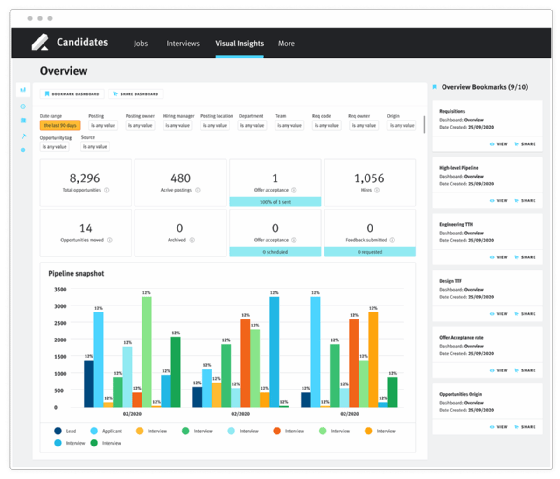vendor management system (VMS)
What is a vendor management system (VMS)?
A vendor management system (VMS) is an enterprise software platform that helps companies control the process of procuring and managing a flexible workforce. VMSes are usually internet-enabled and can be run on premises, in the cloud with software as a service (SaaS), or in a hybrid environment.
For a business, a vendor can mean both a supplier of goods or services and a non-payroll worker. The latter may be a contingent worker or independent contractor who works with the business on a short-term or project-wise basis. Companies can use these workers to scale their full-time workforce and bridge their skills gaps. However, it can be challenging to find and manage these external workers without a unified, enterprise-wide vendor management program. That's where a software-based VMS comes in.
A VMS platform enables businesses to efficiently manage and optimize their contingent labor ecosystem. It generally includes features companies use to search for, identify, onboard, track and manage flexible workers. These include contingent or temporary workers who generally perform jobs in limited time frames, such as filling in for a full-time employee who is on leave; statement-of-work workers, who are employed on a project for a defined time period and scope, such as a programmer on an IT development project; and independent contractors or freelancers who work on a contractual basis that could be short- or long-term.
What does a vendor management system do?
A VMS provides a simple, software-based mechanism for organizations to procure, engage with and manage the contingent workers comprising their flexible workforce. Through a single software and a visual interface, businesses can streamline the entire process of managing temporary workers, staffing suppliers, labor contractors and other parties.
A VMS can facilitate the review and ranking of job applicants during the hiring process, and then accommodate classifying those who are hired and ensuring they fulfill compliance requirements, such as having the proper work permits or accreditations. The system can track, manage and process time sheets, contracts, expenses and invoices associated with the temporary workers. This can result in cost savings, more streamlined processes and fewer noncompliance issues.

What are the benefits of a vendor management system?
A VMS can be a boon for companies that use external labor or have a flexible workforce encompassing both full-time/payroll and temporary hires/contingent staff. A diverse, heterogenous workforce can help augment a firm's talent base while reducing human resources costs. However, it can be challenging to procure and manage such a workforce, particularly if the workers are geographically dispersed. The challenges may be financial, administrative, legal, compliance-related or security-related.
As the contingent labor workforce grows, a unified program is required to manage the workforce effectively and efficiently. Siloed programs reduce the alignment among stakeholders involved in hiring or managing contingent workers. A lack of alignment can create unnecessary confusion, increase worker costs and prevent the organization from maximizing its talent. A VMS can mitigate all these challenges.
A cloud-based VMS software removes silos in contingent labor programs and provides enterprise-wide transparency into the contingent worker ecosystem. It helps to streamline contingent worker oversight from onboarding to offboarding.
Using a centralized database, hiring managers can get all the information they need about workers and rates, whether the workers are procured via direct sourcing or talent providing firms. Such transparency increases visibility into worker details, projects, location, access particulars and payments. This ensures that hiring managers, HR teams, procurement teams and other stakeholders are congruent on contingent worker hiring and management. They can also use the system to implement a standardized onboarding process, which can shorten the learning curve for temp workers and accelerate their time-to-value for the organization.
Other key benefits of a VMS include the following:
- Easier worker sourcing, vetting, invoicing, project management and offboarding.
- Faster discovery of workers with the required qualifications and certifications, decreasing requisition cycle time.
- More opportunities to maximize worker productivity while lowering labor costs.
- Enhanced compliance attributable to centralized worker information and audit trails.
- Simpler administrative processes, such as those for approvals, that can expedite decisions on hiring, training and more.
- Nimble, simple payment processing that benefits everyone.
Key features of a vendor management system
Companies have many VMS products to choose from. The best products tend to include most or all of these features:
Applicant tracking. Applicant tracking functionality makes it relatively easy to source and acquire talented contingent workers efficiently. Companies can create resourcing requests, then track applicants automatically until they're onboarded. Hiring managers can approve or reject items quickly and need less time for administrative activities.
Open architecture and prebuilt integrations. The best VMS products are built on open architecture to integrate well with other applications, such as enterprise resource planning and human resource information system platforms, and back-office systems. The ability to share data and communicate with such systems makes a VMS more versatile and better suited to improve organizational efficiency, enhance user experiences and lower costs.
Advanced analytics and reporting. Strong VMS platforms provide user-friendly reporting capabilities, addressing requirements such as checking worker timesheets, evaluating costs, monitoring compliance and gauging pricing. The most advanced systems incorporate robust analytics and machine learning models that help drive data-driven decision-making.
Built-in compliance modules. Comprehensive VMS tools support the use of contingent workers from different countries because they include built-in templates and other features to simplify compliance with all applicable laws and policies.
Explore vendor relationship management best practices for solution providers and see why risk assessments essential to secure third-party vendor management. Check out 10 best practices for managing strategic supplier partnerships.






